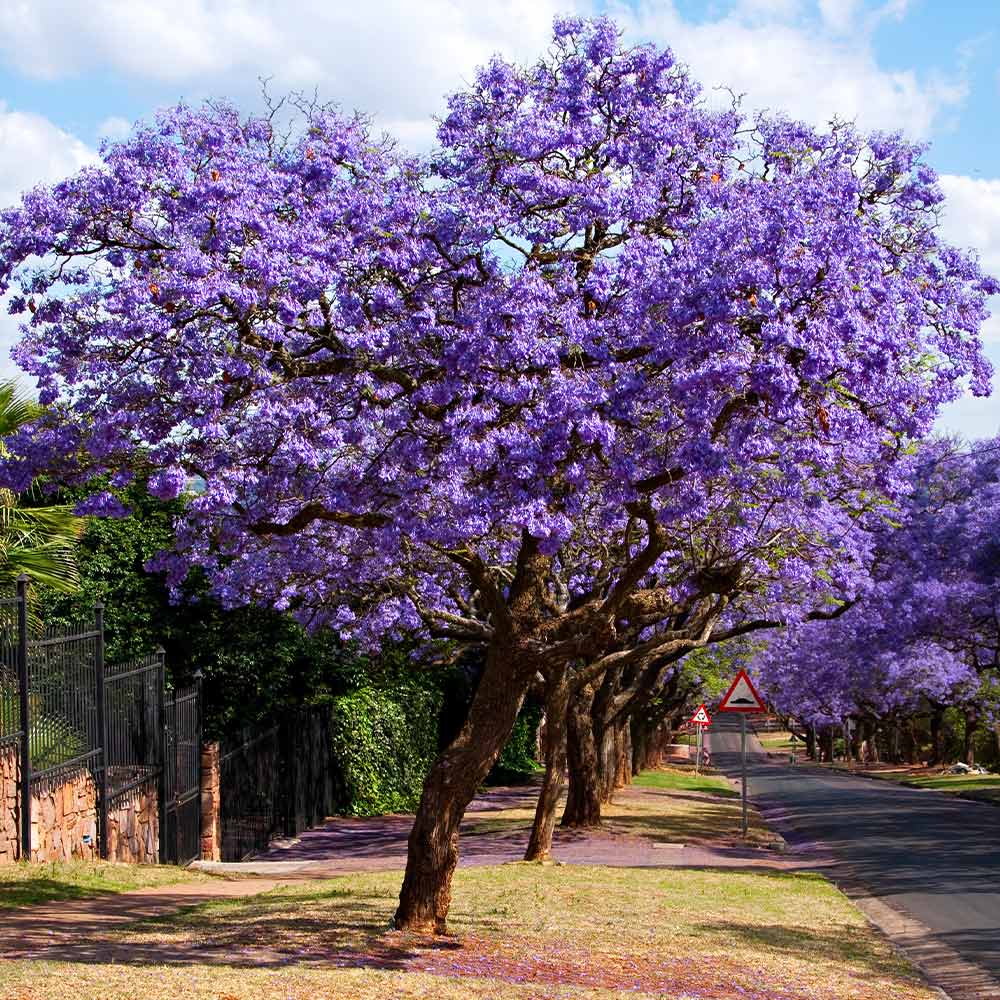Jacaranda: The Purple Jewel of Spring
Jacaranda, a genus of tropical trees in the Bignoniaceae family, is renowned for its stunning display of vibrant purple flowers. Native to South America, especially Brazil, Argentina, and Bolivia, these trees have captivated the hearts of people worldwide with their ethereal beauty and unique characteristics.
A Botanical Marvel
Jacaranda trees are characterized by their tall, slender trunks and feathery, fern-like leaves. The leaves are compound, consisting of numerous small leaflets arranged in opposite pairs. During the spring and summer months, the trees burst into a profusion of trumpet-shaped flowers, typically ranging in color from pale lavender to deep violet. The flowers are often clustered in large panicles, creating a breathtaking spectacle.

One of the most distinctive features of jacaranda trees is their rapid growth rate. They can reach impressive heights of up to 50 feet (15 meters) within a relatively short period. This rapid growth, combined with their attractive appearance, makes them popular choices for landscaping and ornamental planting.
Cultural Significance
Jacaranda trees hold significant cultural importance in many parts of the world. In South America, they are often associated with celebrations and festivals, particularly during the spring season. The blooming of jacaranda trees is seen as a symbol of renewal, hope, and new beginnings.
In Australia, jacaranda trees have become an iconic part of the landscape, especially in cities like Brisbane and Sydney. The annual jacaranda festival, held in spring, is a popular event that attracts thousands of visitors from around the world. The festival features a variety of activities, including flower shows, parades, and live music performances.

Ecological Benefits
Jacaranda trees offer numerous ecological benefits. They provide shade and shelter for wildlife, including birds and insects. Their deep root systems help to stabilize the soil and prevent erosion. Additionally, jacaranda trees can improve air quality by absorbing pollutants from the atmosphere.
Common Jacaranda Species
There are several popular species of jacaranda trees, each with its own unique characteristics:

Jacaranda mimosifolia: This is perhaps the most widely recognized species of jacaranda. It is known for its large, feathery leaves and abundant purple flowers.
Growing and Caring for Jacaranda Trees
Jacaranda trees are relatively easy to grow in warm climates with well-draining soil. They prefer full sun and regular watering, especially during dry periods. While they can tolerate some frost, they are best suited for regions with mild winters.
To propagate jacaranda trees, seeds can be sown directly into the ground or started indoors in pots. Once established, jacaranda trees require minimal maintenance. They are relatively pest and disease resistant, although they can be susceptible to root rot if overwatered.
Conclusion
Jacaranda trees are truly remarkable plants that offer beauty, cultural significance, and ecological benefits. Their stunning purple flowers and graceful form have captivated people around the world for centuries. Whether you are a gardener, nature lover, or simply someone who appreciates the beauty of the natural world, jacaranda trees are sure to impress.

:max_bytes(150000):strip_icc()/how-to-grow-coleus-1402921-02-6ca494adf94f4a5887c94256a24ebf33.jpg?w=200&resize=200,112&ssl=1)



:max_bytes(150000):strip_icc()/hoya-plants-1315763-hero-fe8b10a522eb4d7e9ada8abbc303fbc5.jpg?w=200&resize=200,112&ssl=1)